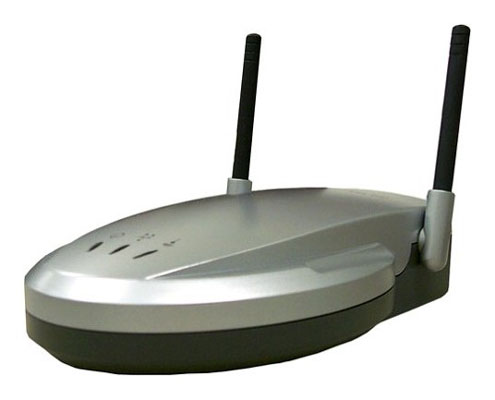Other than the transmission method (obviously, one network involves wires and the other is wireless), here are the three major differences between a wired network and a wireless network:
- Wireless connections are slower. This difference is the big reason why most larger networks still depend on wired Ethernet for the bulk of their connections.Wired networks can use fiber optic cabling rather than plain copper wire cabling to hit even faster speeds.
- Wireless hardware is more expensive. Depending on the standard supported by your wireless hardware, you pay significantly more for wireless hardware than you do for wired hardware.
- Wireless networks require no hubs or switches. Most wireless base stations and WAPs (wireless access points), like the one shown in this figure, can provide connections for up to 253 simultaneous users, so a larger wireless network (with 50 PCs or more) requires far less hardware and upkeep than a wired network that can handle the same number of computers.

No comments:
Post a Comment